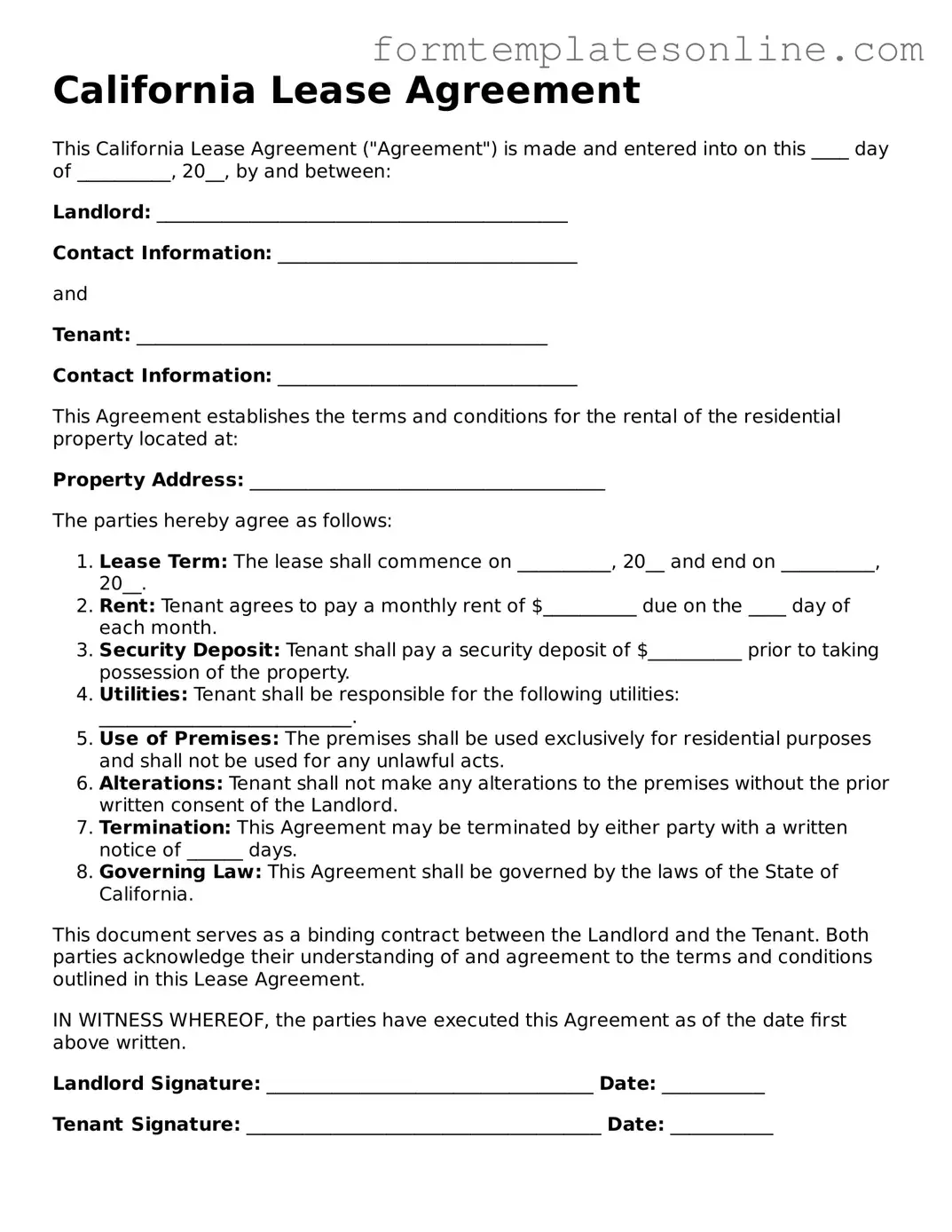California Lease Agreement
This California Lease Agreement ("Agreement") is made and entered into on this ____ day of __________, 20__, by and between:
Landlord: ____________________________________________
Contact Information: ________________________________
and
Tenant: ____________________________________________
Contact Information: ________________________________
This Agreement establishes the terms and conditions for the rental of the residential property located at:
Property Address: ______________________________________
The parties hereby agree as follows:
- Lease Term: The lease shall commence on __________, 20__ and end on __________, 20__.
- Rent: Tenant agrees to pay a monthly rent of $__________ due on the ____ day of each month.
- Security Deposit: Tenant shall pay a security deposit of $__________ prior to taking possession of the property.
- Utilities: Tenant shall be responsible for the following utilities: ___________________________.
- Use of Premises: The premises shall be used exclusively for residential purposes and shall not be used for any unlawful acts.
- Alterations: Tenant shall not make any alterations to the premises without the prior written consent of the Landlord.
- Termination: This Agreement may be terminated by either party with a written notice of ______ days.
- Governing Law: This Agreement shall be governed by the laws of the State of California.
This document serves as a binding contract between the Landlord and the Tenant. Both parties acknowledge their understanding of and agreement to the terms and conditions outlined in this Lease Agreement.
IN WITNESS WHEREOF, the parties have executed this Agreement as of the date first above written.
Landlord Signature: ___________________________________ Date: ___________
Tenant Signature: ______________________________________ Date: ___________
